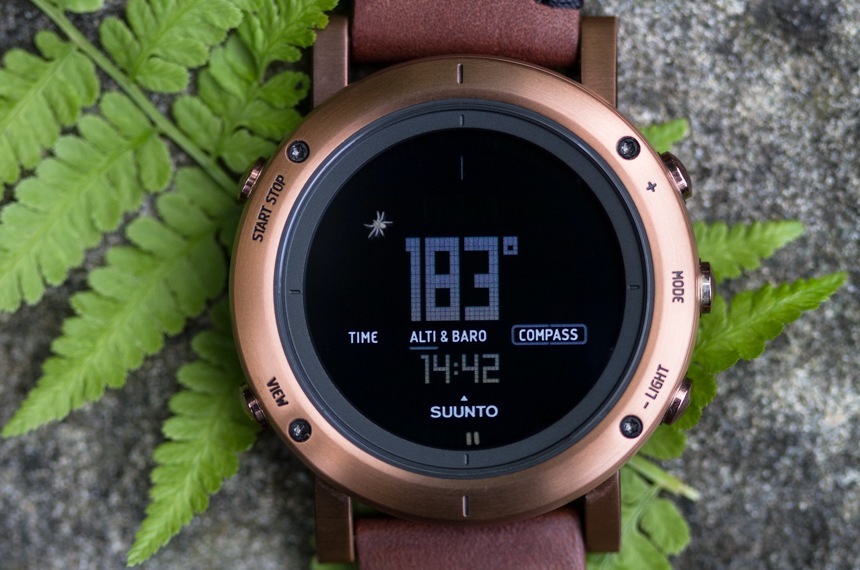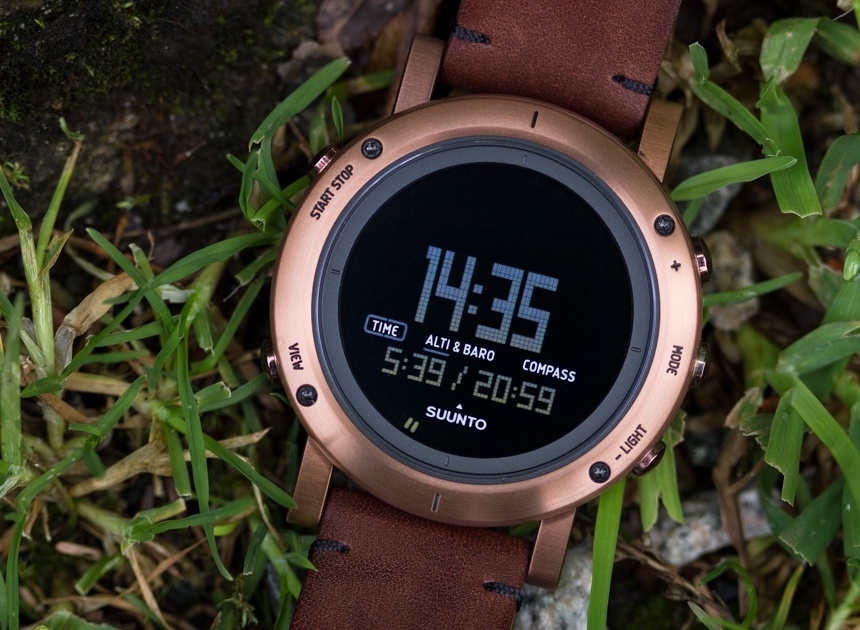
As I prefer to spend my weekends either underwater or high on a mountain trail, my love of mechanical watches is often set aside for mission-specific pieces like a Suunto Zoop dive computer or various “ABC” watches for trail duty. ABC watches, called so for their inclusion of an altimeter, barometer, and compass, are really handy for everything from hiking to climbing and even skiing.

As the majority of my experience with ABC watches is via Casio’s Protrek line (or the similarly-featured Rangeman 9400), I was excited when given the chance to trial a Suunto Essential. While Suunto’s sport watches are not a rare site in Vancouver, my only hands-on use of their products was limited to my Zoop dive computer, which does its job very well, is reasonably priced, and has thus far succeeded in keeping me alive. For those with some knowledge of Suunto’s line up, the Suunto Essential is basically a premium version of the Core, that is specially manufactured and assembled in Suunto’s homeland of Finland (along side their impressive GPS-enabled Ambit models) and features a steel case, sapphire crystal and packaging that sets it apart from the standard Core model you might find at REI or MEC. As such, the Suunto Essential line will not be available at sports outfitters, but will instead retail within watch and jewellery stores as an up-market offering.
The Suunto Essential comes in a fabric roll-style pouch that includes a Suunto pencil and a journal for logging your adventures. Tuned for the urban weekend adventurer, the Suunto Essential Copper featured in this review is treated to a warm copper finish, a comfy leather strap, and it uses a negative LCD display (white text on a black background). The Suunto Essential is available in a range of finishes, straps and screens, from the more designer Suunto Essential Gold to the more sport-ready Suunto Essential Slate with a brushed steel case, positive LCD screen, and textile strap.
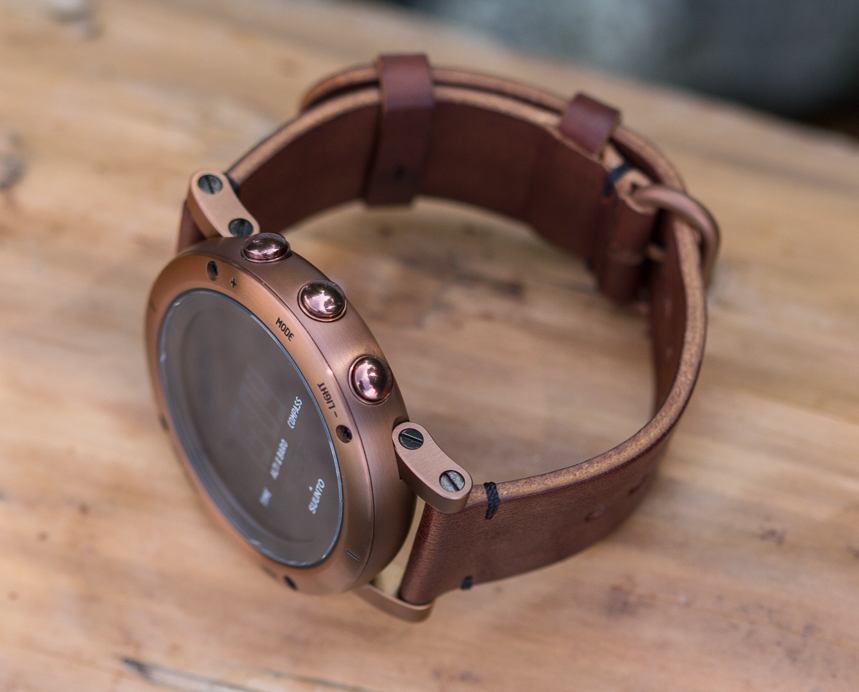
The Suunto Essential is a large watch, even for one with such sporting capabilities. At 49mm wide and 13.4mm thick, you’re not going to forget that it’s on your wrist. Weight is a very agreeable 111g, which actually feels rather lightweight when you consider the physical size of the Suunto Essential. The actual on-wrist feel is quite a bit smaller, as the unique saucer-like shape of the case along with a lack of any hard edges, makes for a very wearable watch that defies its dimensions on your wrist. Unlike most of its solar-powered direct competition, the Suunto Essential is powered by a conventional CR2032 watch battery that is user-replaceable via an opening on the case back.
From the case to the hinged lugs, buttons, and general finishing, the Suunto Essential bests any of its competition. It’s not built like a sport watch, but rather more like an iPhone. The case feels solid but light, and the buttons are beautifully integrated, even down to small details like the font used to label the buttons. In some ways, the case shape and dish-like profile of the Suunto Essential reminds me of Ikepod watches and the case is both eye-catching and very comfortable on wrist. I have to hand it to Suunto, the hardware design and execution is really nice and is easily a step above any of the more premium ABC models from Casio. If you can deal with the 49mm width, the Suunto Essential looks and feels great.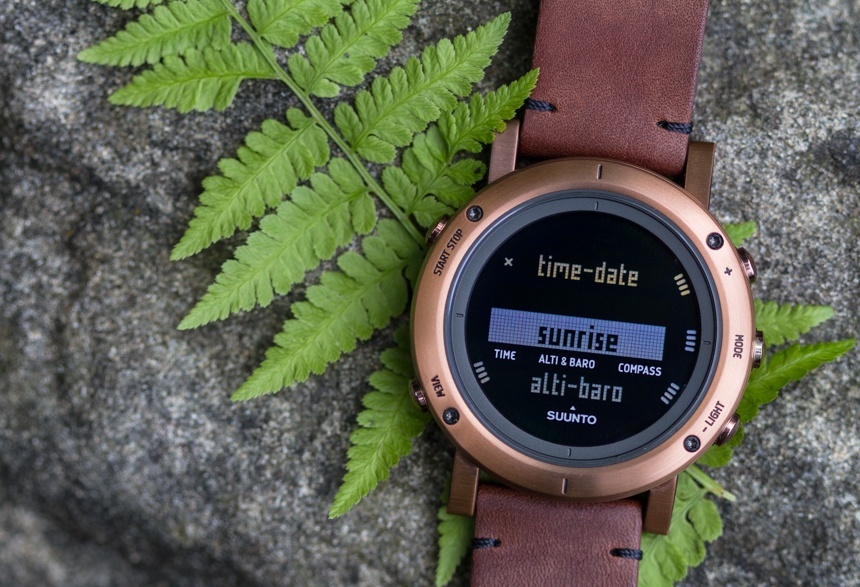
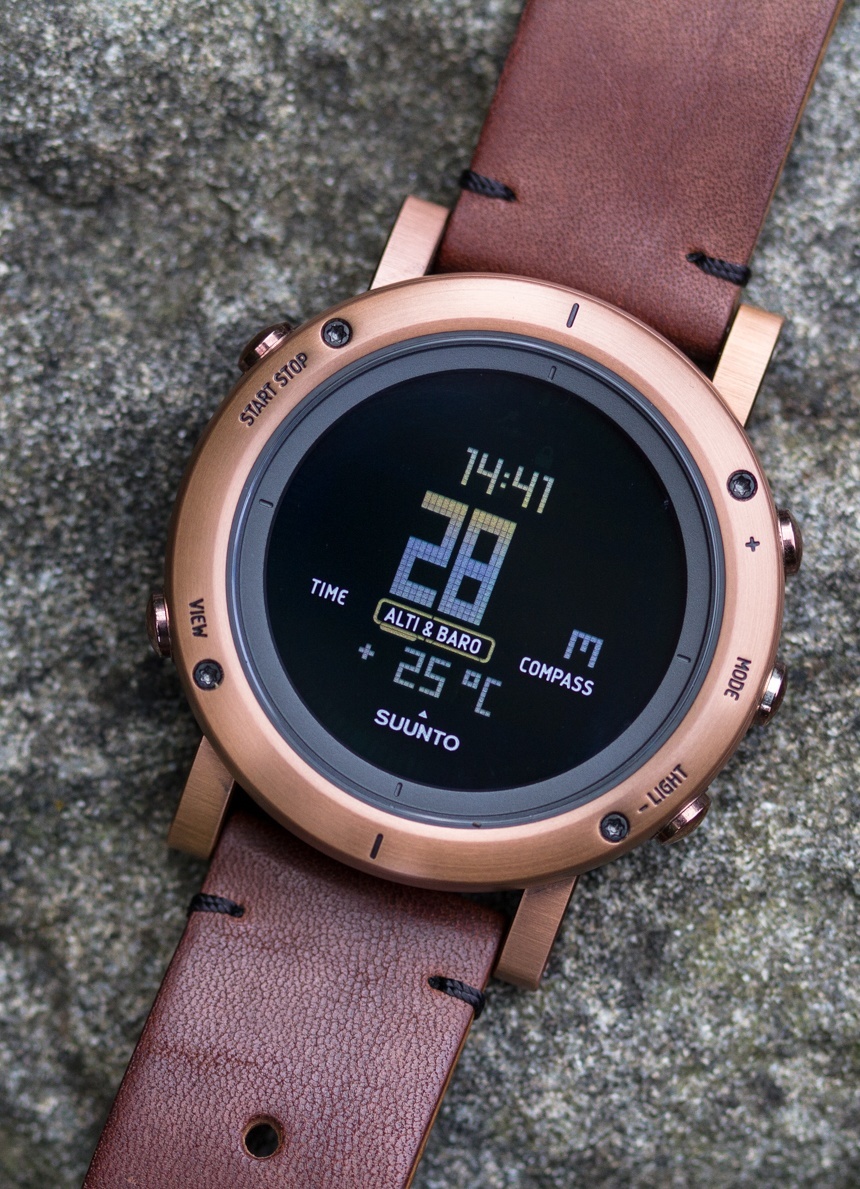
The user interface is controlled by five buttons and the menu, function and ABC structure is unique to Suunto. For functions, the Suunto Essential offers a chronograph, dual time, sunrise/set time, countdown timer, date, and an alarm. The ABC functionality is combined with a temperature indication as well as a snorkeling/freediving depth meter (good to 10m) and a storm alarm, which warns of a rapid drop in barometric pressure. Unlike most of its competition, the Suunto Essential does not offer atomic radio calibration, so you have to set the time by hand and, if you need up-to-the-second accuracy, manually update the seconds display. Depending on the “view” you’ve activated, the Suunto Essential (which uses the same UI as the Core) will show data in one of three locations on the large LCD screen. Core data like the current time or ABC features are shown on the large center area of the display, while ancillary data (like the chronograph, date, or second timezone) are shown in an area below the main display. There is also an area above the large center display for showing icons, additional information, or menu items. When accessing the settings and sub-menus, the screen functions as a whole and offers options via a scrollable list. For a more visual break down of the UI and features, please watch the included video.
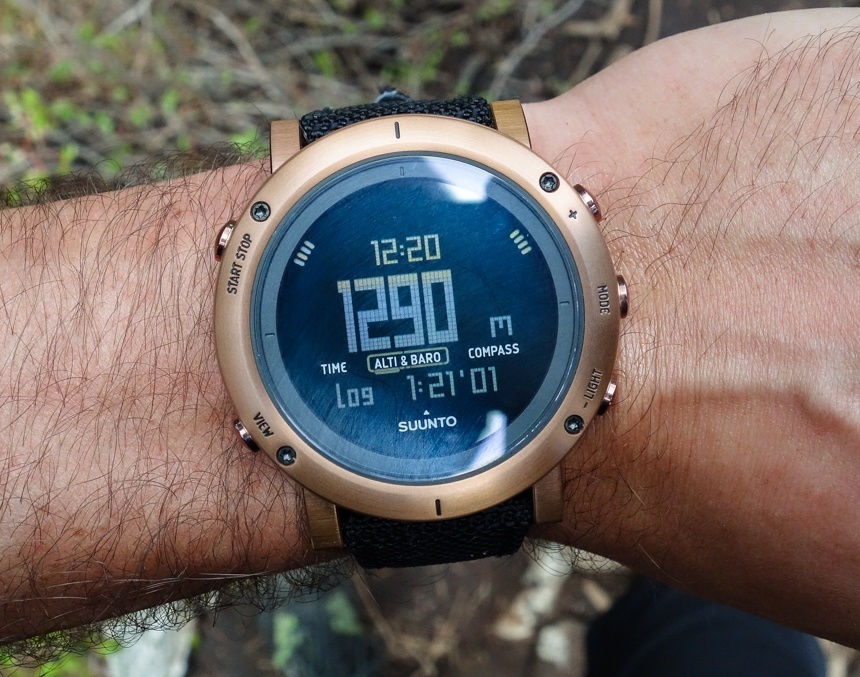
To see how the Suunto Essential fared outside the yuppie confines of Vancouver, I swapped out the leather strap for a more sweat-ready composite kevlar strap and headed out to some of the excellent alpine trails North of Vancouver. From St. Marks Summit to the Binkert Lions, Mt Seymour, and even an unexpected dip in the Squamish river (I’m not entirely sure how to canoe), those of you who follow me on Instagram will have seen me put most of the Suunto Essential’s bevy of features to good use. Unlike my usual trail tool, the Casio Rangeman, the Suunto Essential does not offer the ability to jump between compass, barometer, and altimeter, as the barometer and altimeter features cannot be enabled at the same time. Rather, the interface on the Suunto Essential offers only one or the other as any drastic change in altitude can effect the accuracy of the barometric reading.
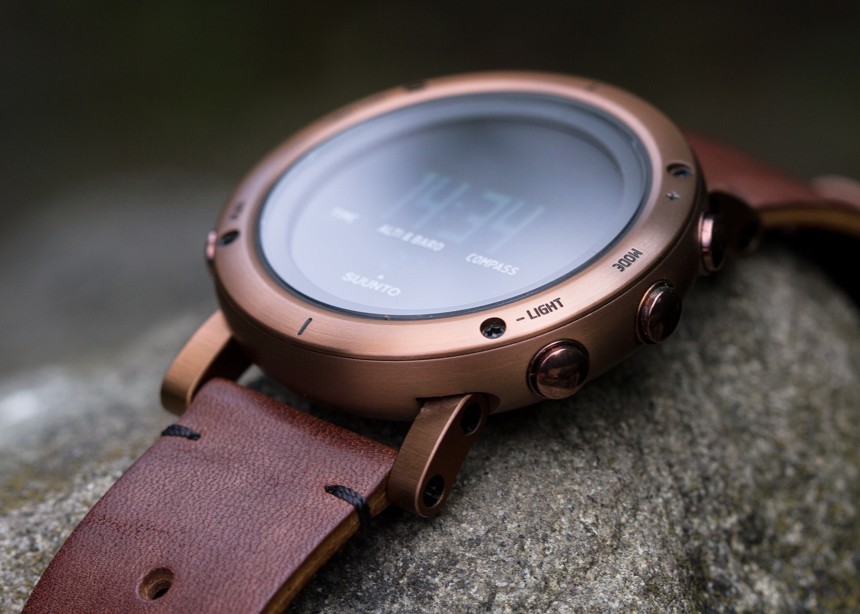
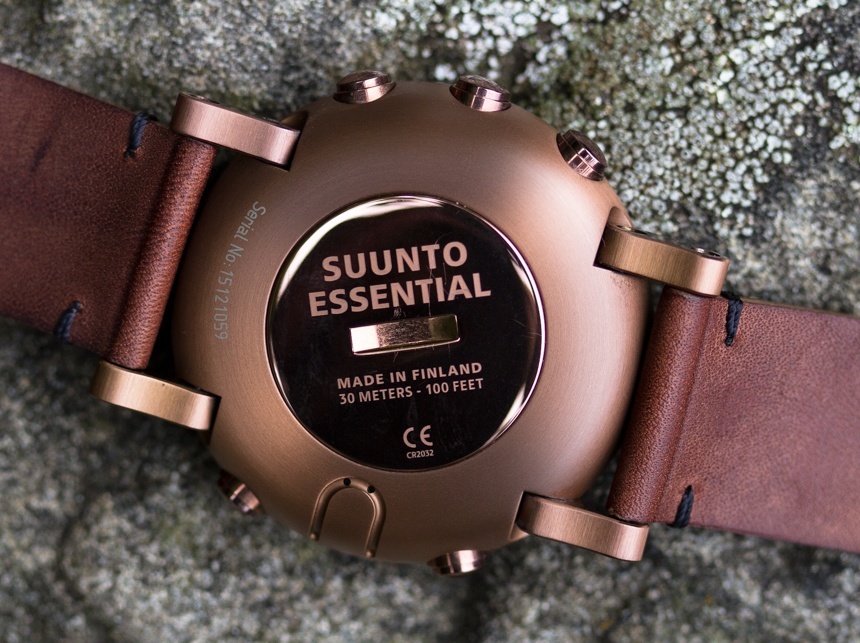 For hiking, Suunto recommends using the altimeter profile while on the move and taking selective barometric readings when resting or camping. In altimeter mode, the Suunto Essential works really well for hiking, showing you the current time on the small upper display, followed by a large display of your altitude (in meters or feet) and then a small display controlled by the “view” button that can show you your log time, net gain/loss, or ambient temperature. This is the real strength of the Core UI, allowing the Suunto Essential to display a lot of crucial data on one screen rather than requiring button presses to jump between disparate pieces of information. Providing I calibrated for the correct altitude before starting a hike, I found the Suunto Essential to be very accurate. Given Suunto’s experience in making outdoor instruments, it’s no surprise that the Suunto Essential is easy to calibrate from either sea level or an indicated reference altitude (like those often listed at trail heads or in guide books).
For hiking, Suunto recommends using the altimeter profile while on the move and taking selective barometric readings when resting or camping. In altimeter mode, the Suunto Essential works really well for hiking, showing you the current time on the small upper display, followed by a large display of your altitude (in meters or feet) and then a small display controlled by the “view” button that can show you your log time, net gain/loss, or ambient temperature. This is the real strength of the Core UI, allowing the Suunto Essential to display a lot of crucial data on one screen rather than requiring button presses to jump between disparate pieces of information. Providing I calibrated for the correct altitude before starting a hike, I found the Suunto Essential to be very accurate. Given Suunto’s experience in making outdoor instruments, it’s no surprise that the Suunto Essential is easy to calibrate from either sea level or an indicated reference altitude (like those often listed at trail heads or in guide books).
The Suunto Essential also makes it easy to keep an eye on the current time, your active time (chronograph), as well as your altitude and sunset time, crucial information when judging the progress of a long hike against the inevitability of sundown. If you’re planning multiple stops or phases within a hike or climb, you can use the log feature to record your time from one altitude point to another, or simply use the log feature as a chronograph specific to you total hiking time, allowing you to track your elapsed time without switching between the time and altimeter modes.
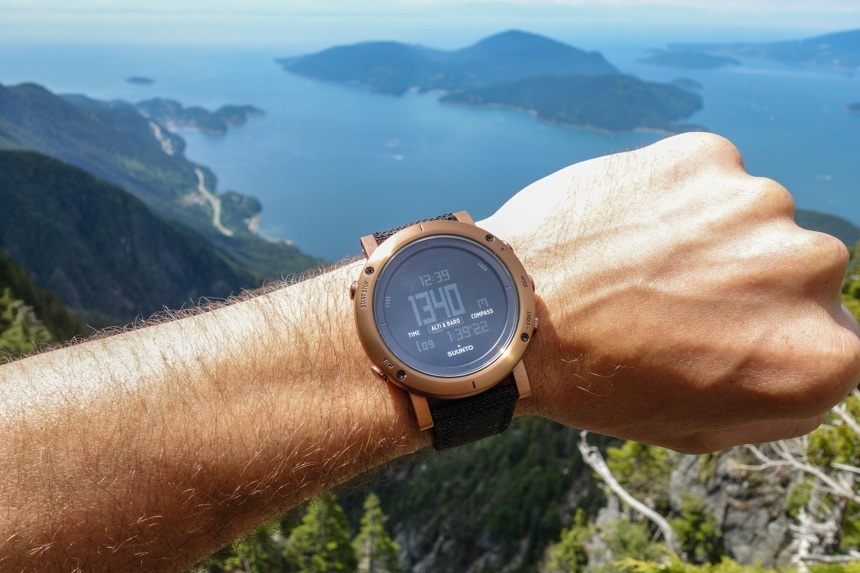
The view from St. Mark’s Summit, high on the Howe Sound Crest Trail north of Vancouver. Note that the time, current altitude and chronograph/log are all shown in a single view on the Suunto Essential.
As all of my hikes were on trails, I didn’t have any planned use for the compass, that is, until I got lost. While hiking High Falls Creek in the Squamish River Valley, we lost the trail repeatedly, and I was able to use the Suunto’s compass to judge the likely position of a nearby forest service road that would take us to the same exit route as the original path. Ensuring my return to my car, the Suunto Essential’s compass aided me in finding the original route and preventing a long and arduous hike down the ascent path. While not an feature I would use on most hikes, the compass is a welcome addition to the Suunto Essential’s spec sheet.
With the profile activated from the easy-to-use sub menu, the barometer works as expected and offers a large graph-style view of the past 24 hours of activity as well as a simple arrow to indicate if the pressure is holding or trending up/down. If you’re spending any considerable time at altitude or perhaps on water, being able to predict possible weather problems is a powerful feature. In Vancouver, you can pretty much just assume it’s either currently raining or just about to rain. For a simple test of accuracy for barometric pressure, I referenced the hourly weather readings from Vancouver International Airport (YVR), which is roughly 12km south of downtown Vancouver. Accuracy was excellent and, just like with the altimeter function, the Suunto Essential is capable of both logging barometric readings and being calibrated for reference altitudes (the readings from YVR are taken at sea level).
While the functionality is on point in terms of accessibility and data presentation, it does operate a bit slower than my Rangeman. Though not limited to Suunto, the negative LCD screen is also problematic in day-to-day use. In bright sunlight, it’s excellent and offers strong legibility that easily matches a positive-type display. Unfortunately, in lower light, it’s really hard to read, forcing you to enable the back light when it wouldn’t otherwise be needed. To keep it simple, if you’re interested in having a Suunto Essential to call your own, consider one of the models with a positive LCD screen, especially if you like to use a digital watch for your evening or low-light activities.
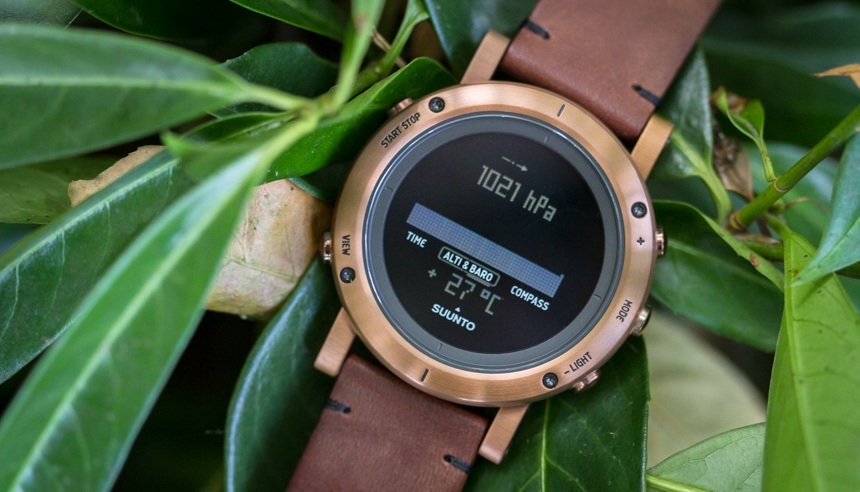
As briefly mentioned above, despite its larger size, the on-wrist feel is excellent and the Suunto Essential doesn’t feel anywhere near as big as it looks. Digital watches are allowed a larger size for my wrist, so while I generally like my watches under 44mm in width and less than 13mm in thickness, the Suunto is fun to wear and, thanks to its hinged lugs and smoothly domed case back, very comfortable. Would I wear it with a suit? No, but jeans and a t-shirt or full on trail attire? It’s a natural fit.
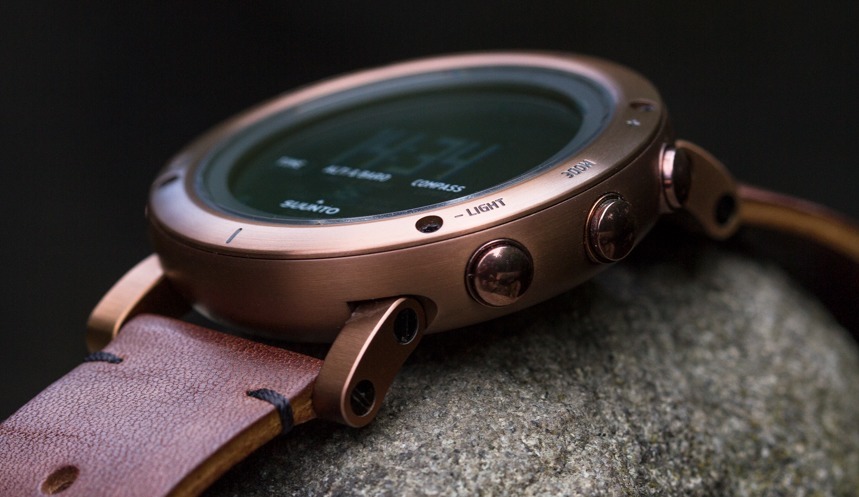
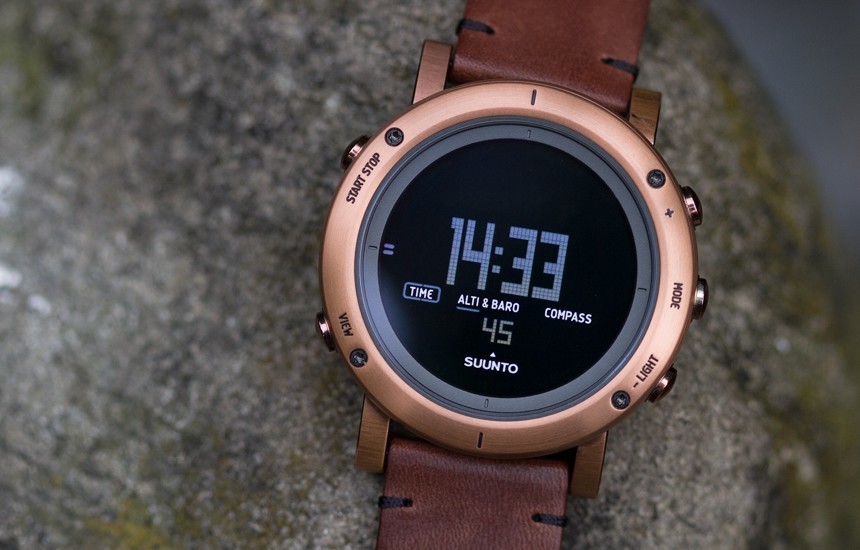 Much like my Zoop, the Suunto Essential is a solid example of a modern tool watch, a watch built to handle non-everyday sporting experiences. The build quality is exemplary, the functions are accurate and easy to access, and the Suunto Essential works really well as a watch, even when you’re not hiking an alpine trail. Retail price for the Suunto Essential as seen in this review is $800 USD, making it a premium digital watch with a premium price. If you opt for the Suunto Essential Slate (my recommendation, with the textile strap and positive LCD display), the price drops to $700 USD. Competition is crucial, as I figure there is less of a romance factor when selecting one digital watch over another, so more of the decision will be based on functionality and cost. Comparing similar functionality, the Casio Rangeman and Protrek models are far cheaper, but don’t exhibit anywhere near the level of materials, finishing, and details found in the Essential’s case, and the Suunto Essential is far more comfortable than my Rangeman or my previous ProTrek 2500. The functions are very comparable and though the Essential lacks radio calibration, it does offer a more intuitive user interface that is nicely designed for actual use of the ABC features.
Much like my Zoop, the Suunto Essential is a solid example of a modern tool watch, a watch built to handle non-everyday sporting experiences. The build quality is exemplary, the functions are accurate and easy to access, and the Suunto Essential works really well as a watch, even when you’re not hiking an alpine trail. Retail price for the Suunto Essential as seen in this review is $800 USD, making it a premium digital watch with a premium price. If you opt for the Suunto Essential Slate (my recommendation, with the textile strap and positive LCD display), the price drops to $700 USD. Competition is crucial, as I figure there is less of a romance factor when selecting one digital watch over another, so more of the decision will be based on functionality and cost. Comparing similar functionality, the Casio Rangeman and Protrek models are far cheaper, but don’t exhibit anywhere near the level of materials, finishing, and details found in the Essential’s case, and the Suunto Essential is far more comfortable than my Rangeman or my previous ProTrek 2500. The functions are very comparable and though the Essential lacks radio calibration, it does offer a more intuitive user interface that is nicely designed for actual use of the ABC features.
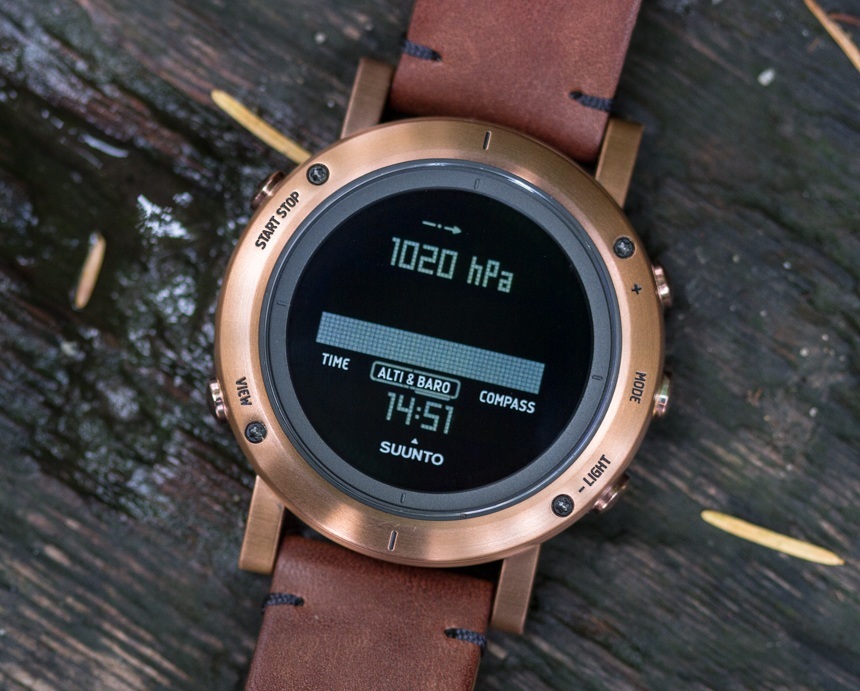
At first glance, the Suunto Essential’s $700+ price point may seem problematic, as it offers the same function set and interface as the Suunto Core. An entry-level Core starts at $299, albeit with a different case design, plastic construction, and integrated strap design. At $400, you can get a model from the Core Alu line, offering the same basic shape as the Essential, but made of aluminum and featuring a mineral crystal (rather than sapphire). The closest competition comes from the Core Brushed Steel which has a steel case, sapphire crystal, and a black silicone rubber strap for $500 USD, but is only available with a negative LCD display. For the additional $200, the Suunto Essential line is packaging (roll case and travel journal) and the fact that the watch is produced in Finland. For some, the Finnish construction is not worth an additional cost, for others, it may well be worth the additional $200-$300.
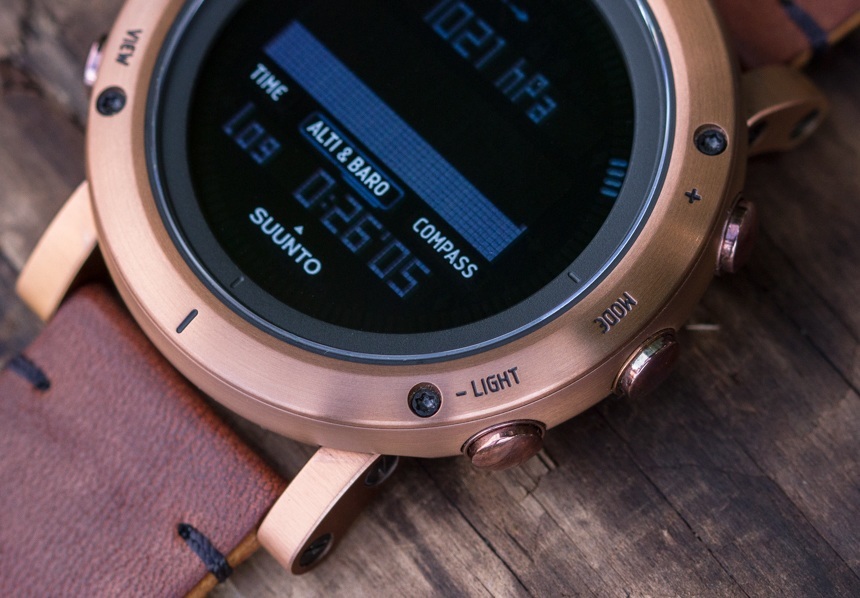
After all, the Suunto Essential is being sold as an upmarket Core, and compared against most of the Core family, it delivers a more upmarket experience. I really like the case and design of the Suunto Essential, and while the copper and negative LCD is not my first choice, it offers a look unlike any other digital watch I’ve experienced. I firmly believe that every watch collection should include at least one multi-role sport watch, and I think the Suunto Core, be it an Essential, Steel, Alu, Crush or Glacier Gray, offers a very sporting platform for almost any taste and budget – pick the one you like and just add adventure. suunto.com
>Brand: Suunto
>Model: Essential Copper
>Price: $800 USD
>Size: 49.1 x 13.4mm
>Would reviewer personally wear it: Yes.
>Friend we’d recommend it to first: The weekend adventurer who wanted a nicely designed, capable, and everyday-ready digital watch.
>Best characteristic of watch: Case construction and finishing.
>Worst characteristic of watch: Negative LCD is difficult to read in lower light. We’d recommend a Core or Essential with a positive screen.

